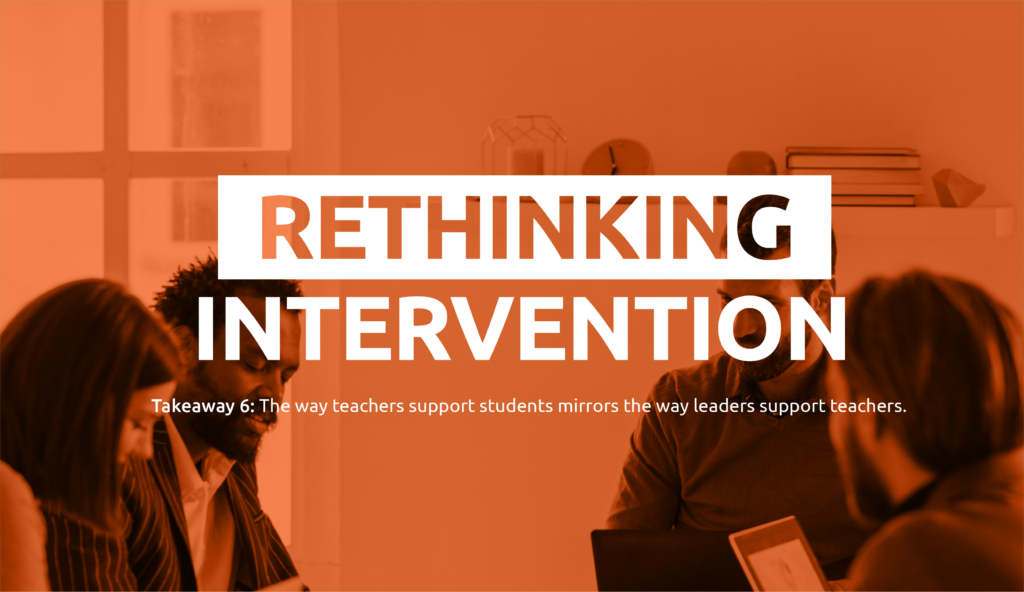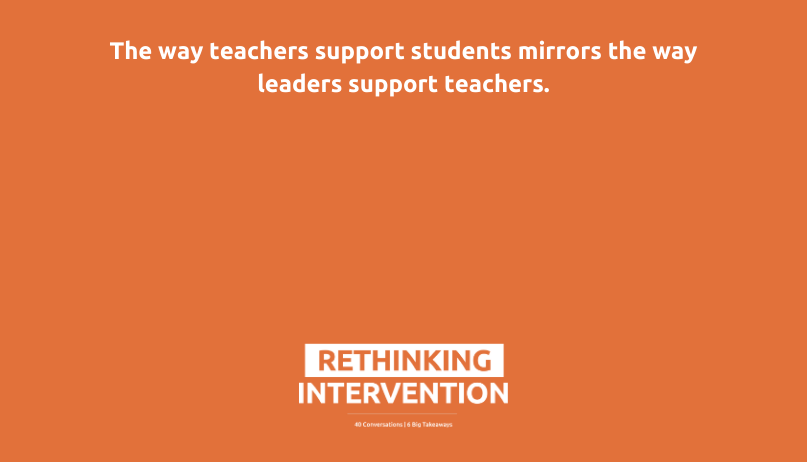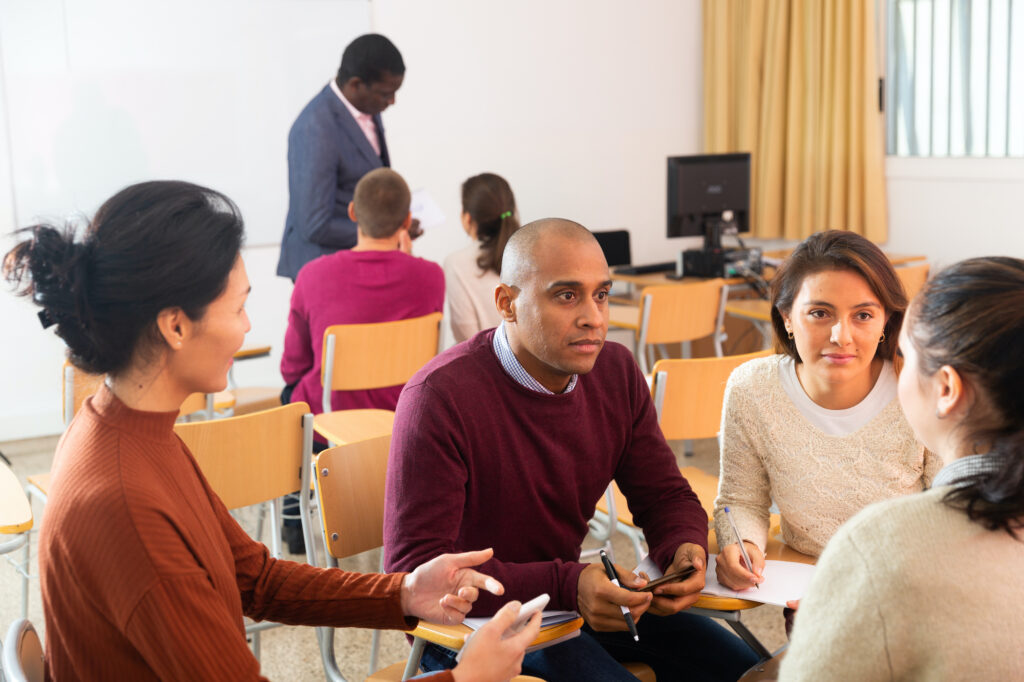
Teacher Support
The way teachers support students mirrors the way leaders support teachers
By Emily Freitag
This post is adapted from an email originally shared on March 12, 2021. If you would like to receive future emails from Emily Freitag, you can sign up here.

Access the Takeaway 6 PLC reflection and discussion guide.
Learning new things requires a leap of faith — to learn to do something new, you have to try doing something you do not know how to do yet. You can read the feelings of risk on students’ faces as they decide whether to pick up their pencil when faced with a problem they’re not sure they know how to solve. Sometimes the risk is rewarded with the jewel of the “aha” moment, but sometimes it is not — sometimes it leads to more frustration, more insecurity, and more fear of risk.
Across the Rethinking Intervention interviews, we heard a lot about the factors that need to be in place to help students take that leap: the underlying relationship, the expectation they can do it, worthwhile content, an advancing ethos, and routines to identify and support needs. We also heard a recurrent theme about the model and conditions that leaders need to create to support teachers in these interactions.
We only believe it is safe to take risks when we see those around us take risks and receive support, even when it does not go well. Leaders can do this by praising the attempt, especially when it leads to mistakes, but the most powerful way leaders can normalize risks and mistakes is by modeling it themselves, transparently. This creates real psychological safety for others to do the same.
The logic is simple:
- We want students to risk doing hard things. →
- For that to happen, students need to see their teachers risk doing hard things. →
- For that to happen, teachers need to see their leaders risk doing hard things.
This year offered abundant opportunities for us to transparently risk and own mistakes. We’ve been doing so many things for the first time that we’ve had no chance but to say “let’s give it a go.” We know early trials will be bumpy, but this year has also given us a chance to demonstrate really persistent mistake-making, too. For example, I have tried many approaches to facilitating virtual retreats for my leadership team, and every one has been an utter flop. We get through plenty of business but never feel the connection and community we felt in person. They have gotten less bad, but none have been good. I keep apologizing and trying a different approach, but I worry that my team is going to lose patience with my learning. The only thought that helps me sleep at night after another failed attempt is “at least my team gets to see me keep trying.”
Just like a professional development session on how to do professional development should model effective professional development, when your core business is supporting learning for students, everything about how you design school and culture needs to encourage the risk required for learning. That should create a real focus for leaders — not to be perfect leaders but rather leaders in the learning, to design school routines and cultures that model what we know about learning, and especially to model that in how they interact with teachers.
What does that look like? Fortunately, the takeaways from the series apply to teachers and leaders as much as they apply to students:
- Relationships and learning are inseparably connected.
- What leaders expect of their teachers influences what teachers expect of themselves.
- Teachers engage and learn best from work that is challenging, relevant to their jobs, and helps them understand and impact the world.
- Moving forward into new learning for teachers with support will advance learning more than stopping and going back.
- Even a great plan will not work for all teachers; continuously monitoring, understanding, and meeting needs will.
Thank you so much for joining us on this journey over the past six weeks. I hope these takeaways and the actions that flow from them can be useful touchstones as we think about how to support recovery and redesign as well as how to focus time, energy, and resources in the years to come. This guide lists in one place all the takeaways and initial thoughts on actions — email me to let me know what resonates and what you would add.
There is more to explore, so stay tuned as we continue the learning and sharing. (And let me know if you have ideas.)


